
| Stage 9 - Mystery Bay to Bermagui |
|
Mystery Bay to Wallaga Lake |
|
|
 Tilba Tilba Lake |
 Looking through the banksias to 1080 Beach |
|
|
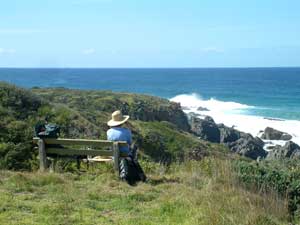 A good place to ponder |
Midway across, a wooden seat invited us to stop and have a snack - it became obvious why it had been put there as it looked down onto a tiny idyllic secluded cove. Eventually pulling ourselves away from this magical spot, we descended to the 5 km stretch of Wallaga Beach. |
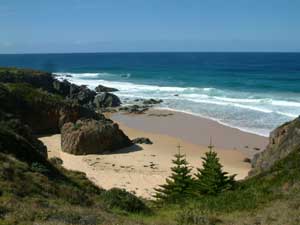 This cove is not named on the map nor with a sign - I hereby name it "Nello's Cove" |
|
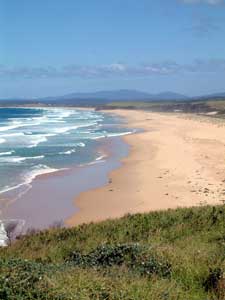 Looking down Wallaga Beach towards Mumbulla Mountain |
|
 The path southward |
 It is impossible to escape the presence of Gulaga on this stage of the walk |
|
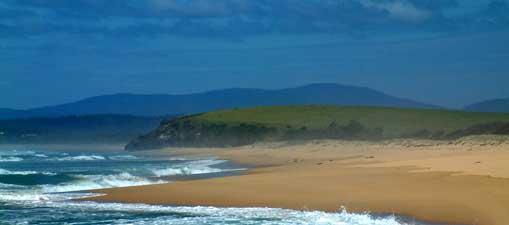 Biamanga landscape |
 Gulaga landscape |
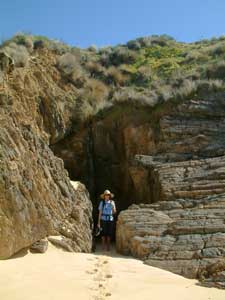 Cave on Wallaga Beach |
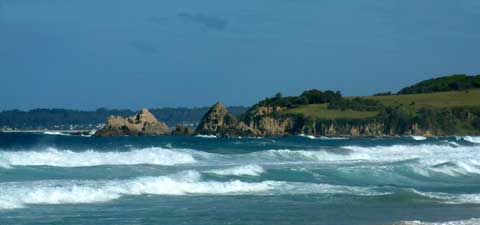 Murunna Point |
 View from the Murunna cliff top |
|
|
 Camel Rock |
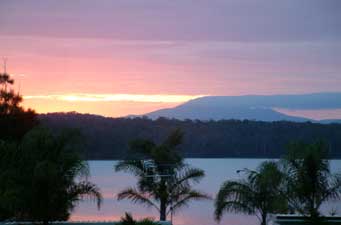 Glorious Wallaga sunset |
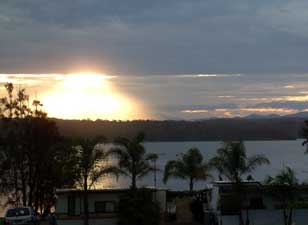 The mothership is landing! |
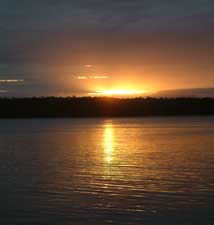 On golden pond? |
 Casuarina grove lining the shore |
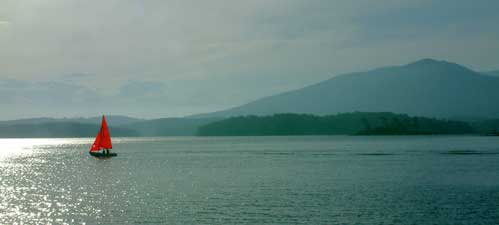 |
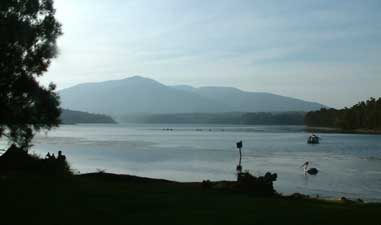 |
|
   |
Wallaga Lake to Bermagui |
|||||||||||||||||||
|
|
||||||||||||||||||
|
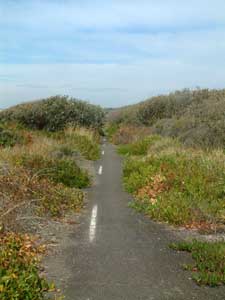 Keep left! Storm-damaged road turned walking track |
|
|
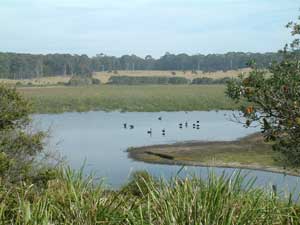 Long Swamp |
|
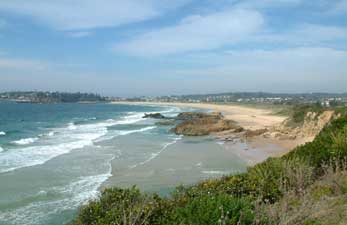 Hayward's Beach and Bermagui |
 The colours of sandstone |
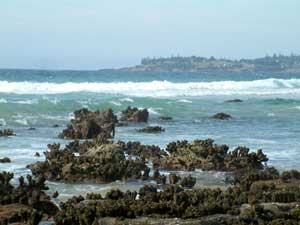 "Cungie" covered rocks - that is sea-squirts for the profane and tunicates for the profound |
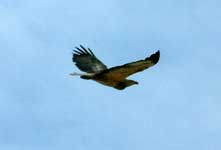 |
As we climbed up over Keating's Headland, a sea-eagle circled us and twice its shadow passed over us. Remembering our lessons at Gulaga about how people do not choose their totem, but that their totem chooses them, we decided that the sea-eagle had become our totem animal. Given my fascination for this superb aerialist, I was flattered. |
 |
|
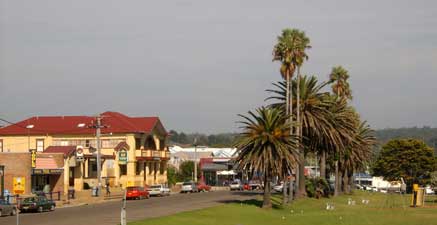 The main street of Bermagui |
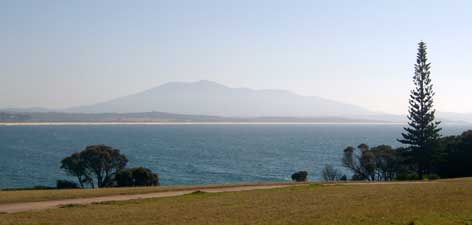 Looking across the bay back toward Gulaga |
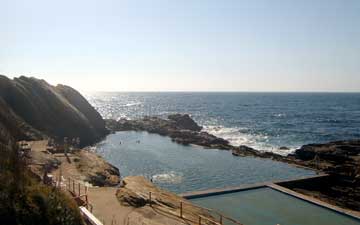 The Blue Pool - great place for an early morning dip |
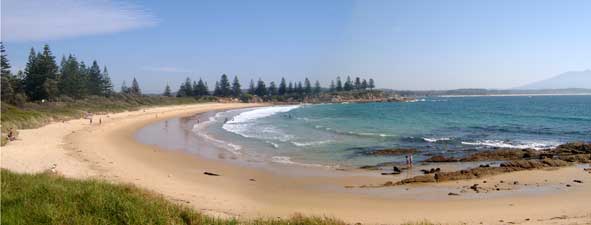 Norfolk Island pines lining Horseshoe Bay |
|
            |